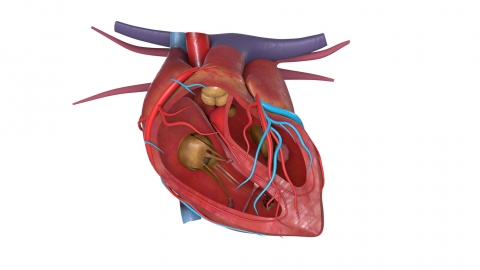Why does Marfan syndrome cause arterial dissection?
Marfan syndrome, also known as Marfan syndrome, predisposes patients to arterial dissection primarily due to factors such as genetic predisposition, fragile connective tissue, aortic root aneurysm, vascular wall structural abnormalities, and hemodynamic changes. If abnormalities are detected, timely medical attention is recommended. Detailed analysis is as follows:

1. Genetic factors: Marfan syndrome is an autosomal dominant genetic disorder caused by mutations in the FBN1 gene. This gene mutation leads to abnormal collagen synthesis in connective tissue, weakening the vascular wall and making it prone to rupture under the impact of high-speed, high-pressure blood flow, thus forming an arterial dissection.
2. Fragile connective tissue: Gene mutations cause fragile connective tissue in patients with Marfan syndrome, making the aortic wall susceptible to dilation and rupture. Arterial dissection is more likely to occur during blood pressure fluctuations or intense physical activity.
3. Aortic root aneurysm: Patients with Marfan syndrome often have asymptomatic aortic root aneurysms. Over time, these aneurysms gradually enlarge and become unstable, potentially leading to acute ascending aortic dissection.
4. Vascular wall structural abnormalities: Patients with Marfan syndrome exhibit structural abnormalities in the vascular wall, such as medial muscle fibrosis and elastic fiber fragmentation, making the vascular wall more susceptible to damage and tearing, thereby increasing the risk of arterial dissection.
5. Hemodynamic changes: Due to structural abnormalities in the vascular wall and fragile connective tissue, hemodynamics are altered. High-speed, high-pressure blood flow exerts greater force on the weakened vascular walls of patients with Marfan syndrome, easily causing intimal tears and subsequent arterial dissection.
Therefore, patients with Marfan syndrome need to closely monitor cardiovascular health and promptly diagnose and treat potential risks of arterial dissection.




